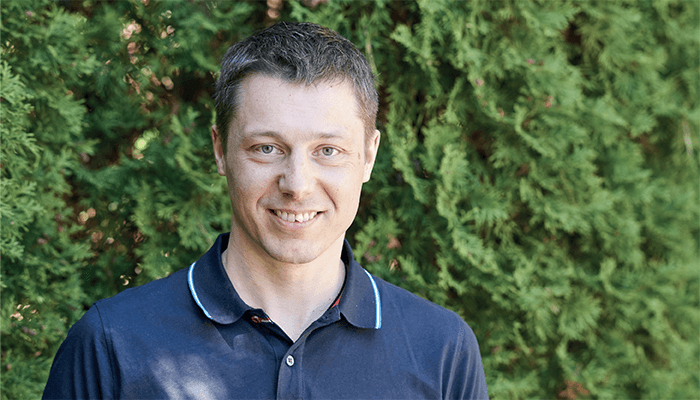The Analytical Scientist, in collaboration with LECO Corporation, Restek, Axel Semrau and GL Sciences, invited those working in the GC-MS space to submit their most impressive application notes for the chance to win some exciting prizes – all expenses paid facility or conference trips, consumables worth $3,000, and instrument discounts, to name but a few.
Our expert panel of judges – including Robert K. Nelson, James Harynuk, Susan Richardson, Hans-Gerd Janssen, Giorgia Purcaro, Erich Leitner, Jaap de Zeeuw, and Robert Trengove – have considered the entries and the results are in! Our winners across the following categories are:
- Dmitry Koluntaev for Best Novel Application
- Anika Lokker for Excellence in Chromatography
- Flavio A. Franchina for Creative Use of Application Workflows, Sample Prep & Automation
- Katelynn Perrault – Special Recognition
Here, we catch up with Best Novel Application winner Dmitry Koluntaev.

With Dmitry Koluntaev, Application Specialist, Q-Tek, Montenegro
Please introduce yourself…
As an application specialist, I work for a small private company that manufactures GC-MS systems. Searching for new applications for GC-MS is one of our main focuses.
I am a biologist by education, but I have been working with mass spectrometry since university – it’s become a great hobby! I really enjoy discovering new possibilities for GC-MS; for example, in museum object analysis.
What was your main inspiration?
I always wanted to work with samples filled with history – and around a year ago, we were asked for assistance by restorers to analyze samples of varnish taken from two museum items – book covers and chest lids. It was very important to determine exactly what type of varnish had been originally used by the artist so that it could be properly removed – without damaging the drawings underneath. We agreed! It was a great opportunity to try our hand at such a field of research and use real historical samples for analysis.
I spent several days analyzing the literature to find out what types of varnishes had been used back then, how they had been prepared by masters, and what recipes had been used. Having studied the objects of research, I started looking for various samples of varnish in specialized art stores. Developing a specialized library of markers for each type of varnish became the optimal solution for discovering the steps of sample preparation.
The aspiration to find the answer to the question posed and the desire to touch historical subjects – that's what really fascinated me in this work.
Any challenges?
To prevent harm to the picture, historical research usually involves incredibly small samples. And for this study, all stages of sample preparation had to be efficient and universal – meaning that one extraction method was used across a variety of target compounds; there was no possibility of re-analysis. To uphold these requirements, we implemented a unified method of sample preparation that would allow determination of resin markers and oils in which the artist melted the resin and prepared the varnish.
Another challenge of our research was that the obtained chromatographic profiles of the resin extracts are usually complex chromatograms, which are difficult to interpret without using resins of known botanical origin. Therefore, it was necessary to develop a list of characteristic markers for each type of resin.
Any lessons learned?
Having immersed myself in the literature, I noticed the broad potential of using GC-MS in the study of museum objects. For example, characterization of the binding oils used by artists in painting is in high demand not only in the process of restoration of an object of art, but also in answering the question about the date of painting to confirm its authenticity.
Another main takeaway from this study was that a large extent of any task can be solved and there is nothing to be afraid of when approaching your research. A thorough study of the objects of research at the initial stage allows you to choose the direction of the study. Working with intermediate results also allows you to assess their correlation with expected results.
Do you have any tips for scientists hoping to bring a touch of creative flair to their application workflows or method development?
By combining the exploration of new GC-MS trends, tracking applications from major manufacturers, and reading scientific reviews, we can find answers to questions that may otherwise have been unsolved. You must go beyond the framework to grow and develop as an analytical scientist – this is where creativity and discovery lies.
What applications do you hope to explore in the future?
I remain deeply immersed in exploring the possibilities that GC-MS offers in targeted and non-targeted metabolomics. Today, we have many opportunities to use open-source software for processing mass spectrometry data (for example, MzMine, GNPS, XCMS, MetaboAnalyst), which allow us to use GC-MS systems in new ways, access harmonized data, and visualize interpretation of results.
You can download the application note here




